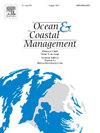海洋牧场生态系统桡足类时空动态与水文生态变化的相互作用
IF 4.8
2区 环境科学与生态学
Q1 OCEANOGRAPHY
引用次数: 0
摘要
由于全球气候变化,海洋生态系统正面临各种环境挑战。为了应对这些挑战,发展和扩大海洋牧场已成为一个关键的解决方案。其中,浮游动物是评价海洋牧场生态健康的重要指标。利用2003 - 2022年江苏连云港海州湾海洋牧区桡足类动物丰度的时空分布特征及其对环境因子的响应。结果表明:桡足动物丰度呈现出明显的变化规律,春季高于夏季和秋季,且在海洋牧区中部分布较为均匀;在El Niño年期间,桡足类动物的丰度更有可能在海湾外发现,而在El Niño年之前,情况正好相反。广义加性模型(GAM)显示,影响季节桡足类丰度的主要环境因子包括温度、SiO3−-Si、NO3−-N和叶绿素a,但在El Niño事件期间,关键环境因子转变为温度、NO3−-N和溶解氧(DO)。该研究得出结论,营养物质会影响不同气候条件下桡足动物的丰度。在强烈的El Niño事件期间,温度也间接影响了桡足动物的丰度。研究还指出,硅藻不太可能通过直接的捕食相互作用直接影响桡足类动物的丰度。这项研究的发现提供了有价值的见解,可以提高我们预测海洋牧场系统内浮游动物种群变化的能力,因为它们对全球气候变化做出了反应。这方面的知识对于全面评估与海洋牧场有关的生态效益和指导其可持续发展至关重要。最终,本研究的数据和科学参考将有助于评估近海生态环境,促进实际的生态系统恢复工作。本文章由计算机程序翻译,如有差异,请以英文原文为准。
Interactions between spatiotemporal dynamics of copepods and hydro-ecological change in marine ranching ecosystems
Marine ecosystems are encountering a variety of environmental challenges as a result of global climate change. In response to these challenges, the development and expansion of marine ranching have emerged as a crucial solution. Notably, zooplankton is acknowledged as an essential indicator for evaluating the ecological health of marine ranching. This study examined the spatiotemporal distribution of copepod abundance and its reaction to environmental factors, utilizing data collected from the marine ranching area of Haizhou Bay (Lianyungang, Jiangsu, China) between 2003 and 2022. The results showed that copepod abundance exhibited a notable pattern, with higher levels in spring compared to summer and autumn, and was consistently distributed uniformly in the central region of the marine ranching area. During El Niño years, copepod abundance was more likely to be found outside the bay, unlike non-El Niño years, where the opposite distribution was noted. The generalized additive model (GAM) revealed that the primary environmental factors influencing copepod abundance across various seasons included temperature, SiO3−–Si, NO3−–N, and Chlorophyll a. However, during El Niño events, the key environmental factors shifted to temperature, NO3−–N, and dissolved oxygen (DO). The study concluded that nutrients influence copepod abundance across different climate conditions. During intense El Niño events, temperature was also found to affect copepod abundance indirectly. It was also noted that diatoms are less likely to directly impact copepod abundance through direct predation–prey interactions. The findings of this study provide valuable insights that can enhance our ability to predict changes in zooplankton populations within marine ranching systems as they respond to global climate change. This knowledge is crucial for conducting thorough assessments of the ecological benefits associated with marine ranching and for guiding its sustainable development. Ultimately, this research's data and scientific references generated from this research will be instrumental in evaluating offshore ecological environments and facilitating practical ecosystem restoration efforts.
求助全文
通过发布文献求助,成功后即可免费获取论文全文。
去求助
来源期刊

Ocean & Coastal Management
环境科学-海洋学
CiteScore
8.50
自引率
15.20%
发文量
321
审稿时长
60 days
期刊介绍:
Ocean & Coastal Management is the leading international journal dedicated to the study of all aspects of ocean and coastal management from the global to local levels.
We publish rigorously peer-reviewed manuscripts from all disciplines, and inter-/trans-disciplinary and co-designed research, but all submissions must make clear the relevance to management and/or governance issues relevant to the sustainable development and conservation of oceans and coasts.
Comparative studies (from sub-national to trans-national cases, and other management / policy arenas) are encouraged, as are studies that critically assess current management practices and governance approaches. Submissions involving robust analysis, development of theory, and improvement of management practice are especially welcome.
 求助内容:
求助内容: 应助结果提醒方式:
应助结果提醒方式:


